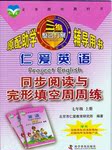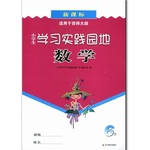题目内容
—Is that all?
—Yes. That’s all ______ I want to take.
A.which B.that C.who D.whose
 仁爱英语同步练习册系列答案
仁爱英语同步练习册系列答案 学习实践园地系列答案
学习实践园地系列答案My friend David is a young man from America. Now he doesn’t live far from the center of Chengdu. His Chinese neighbors (邻居) like him and are always happy to help him when he meets difficulties.
David works in a school not far from his home. He gets up early in the morning. After a quick breakfast, he rides his bike to school every day. It usually takes him 15 minutes to get to school. He thinks it is good exercise.
The school is very big, with about 5,000 students. David teaches English at school. He has twelve classes a week. After class he helps to organize (组织) some after-school clubs, like the singing club, the basketball club. He teaches the students to sing English songs and how to play basketball. He thinks they are interesting.
David also works as a volunteer (志愿者) in the community center. He teaches people English there. He goes there with his friend every Saturday and Sunday and stays there for two hours. Many people like him very much. They are good friends now.
David likes Chengdu very much. He also likes the food there. He says it’s very happy to live in this city.
Title: 1. in Chengdu
David’s neighborhood (街区) | ● His home is not far from the center of Chengdu. ● His neighbors are 2. to him. |
Before work | ● He gets up early and has a quick breakfast. ● He goes to school by bike. It is a 3. from his home. |
4. | ● He teaches students English. |
After work | ● He also helps organize after-school clubs. ● He teaches students to sing and play basketball. ● He works as a volunteer in the community(社区)center on the 5.. |


